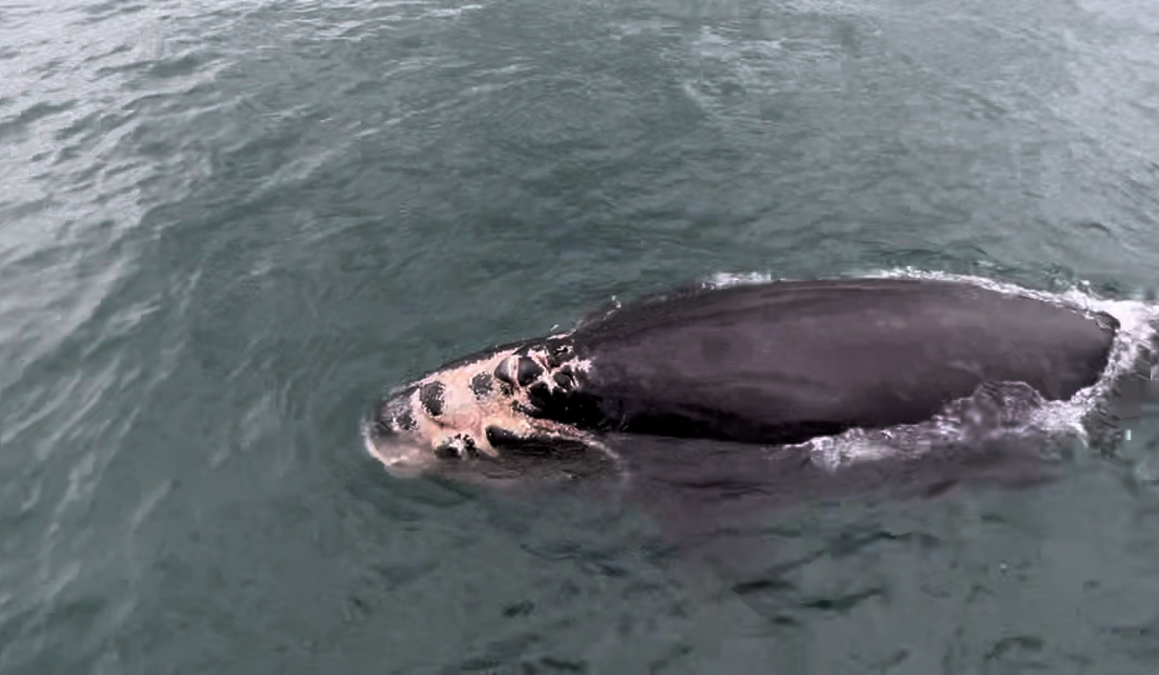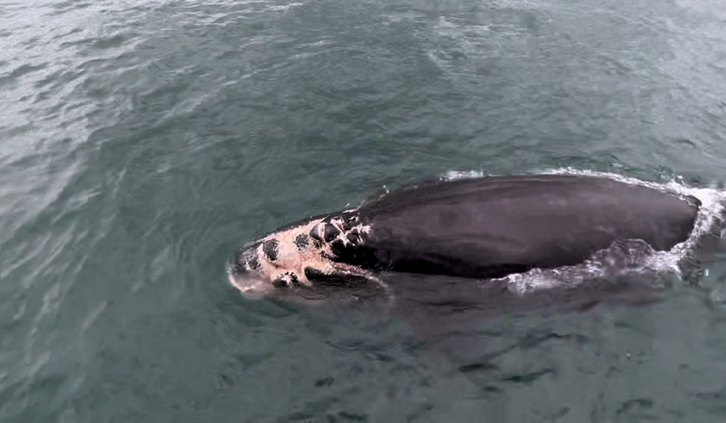BRUNSWICK – Boaters off the coast of Georgia, South Carolina and northeast Florida are being asked to report sightings of an injured North Atlantic right whale calf.
The calf, one of only nine documented in the Southeast so far this winter, has wounds on its head consistent with being hit by a boat propeller. Anglers fishing off South Carolina’s South Edisto River inlet saw the calf with its mother on Jan. 3. The calf approached the boat as it sat still, offering boaters a close look.
Scientists hope the animal is seen again so they can better assess its injuries. Each calf is crucial. North Atlantic right whales are one of the world’s most endangered large whales, with fewer than 350 left.
Boaters should report sightings of the calf and other right whales at 877-WHALE-HELP (877-942-5343) or via the U.S. Coast Guard on marine VHF channel 16. Please provide time, location and sighting details. Observe right whales only from a distance: Stay at least 500 yards away and never pursue or follow one.
Researchers have confirmed that the injured calf belongs to Juno (right whale catalog no. 1612). It was the first calf documented in the region this season, spotted by a Clearwater Marine Aquarium Research Institute aerial survey team off the South Carolina coast Nov. 28. The Georgia Department of Natural Resources videoed the then-healthy pair off Sapelo Island Dec. 4. The two have since been seen in waters off north Florida and now South Carolina.
DNR biologists said the calf’s injuries appear severe but they are not fresh. Images taken by the anglers show the wounds covered in cyamids. The presence of the small crustaceans commonly found on whales indicate the wound is at least a few days old. But the injuries may affect the calf’s ability to nurse.
Vessel strikes, along with entanglement in commercial fishing gear, are one of the leading causes of death for North Atlantic right whales. An accidental boat strike off St. Augustine, Florida, in 2021 killed a calf and injured its mother (she has not been seen again). In 2020, a newborn with extreme injuries consistent with a vessel strike was given antibiotics off Fernandina Beach, Florida, but disappeared soon after and likely died.
Most vessels over 65 feet long must travel at 10 knots or less in seasonal management areas along the Southeast and mid-Atlantic from November into April. Boaters on vessels less than 65 feet are also urged to keep watch, use the Whale Alert app (https://www.whalealert.org) and slow down in right whale waters to better avoid collisions that endanger them, their boats, and the whales.
Despite their size, right whales can be hard to see because of their dark color and lack of a dorsal fin. Mothers and calves spend most of their time at or near the surface, putting them at more risk of being hit.
The waters off the southeastern U.S. are the only known calving grounds for North Atlantic right whales. Each November through January, pregnant females migrate more than 1,000 miles from New England and Canadian waters to the Southeast to give birth and nurse their calves until they are strong enough to return north.
How boaters can help
- When boating off Georgia's coast from November to April, follow the guidelines for navigating in right whale waters (https://georgiawildlife.com/conservation/rightwhales). The website also includes recommendations for recreational boaters.
- Slow down when boating where right whales are present. The Whale Alert app (https://www.whalealert.org) can help inform you if whales are possibly in the area.
- Report sightings by calling 877-WHALE-HELP (877-942-5343) or by hailing the U.S. Coast Guard on marine VHF channel 16.
- If you spot a whale, slow down further, operate at slow speed or put your engine in neutral. Assess the scene and slowly leave the area while keeping watch – other whales could be nearby.
- Stay at least 500 yards from any right whale you see (it’s the law) and never pursue or follow one.
- Be wise stewards of Georgia's natural resources and enjoy the outdoors responsibly.
All about Juno, the calf’s mother
- Right whale catalog #1612
- At least 39 years old
- Nicknamed after a Roman goddess for the whale’s “Roman nose,” or convex-shaped rostrum
- First right whale mom spotted during the 2023-2024 calving season. Seen with calf on Nov. 28, 2023.
- This is Juno’s eighth known calf. The calf is over one month old now.
- For more information: New England Aquarium, https://www.neaq.org/2023-2024-right-whale-mother-and-calf-pairs





